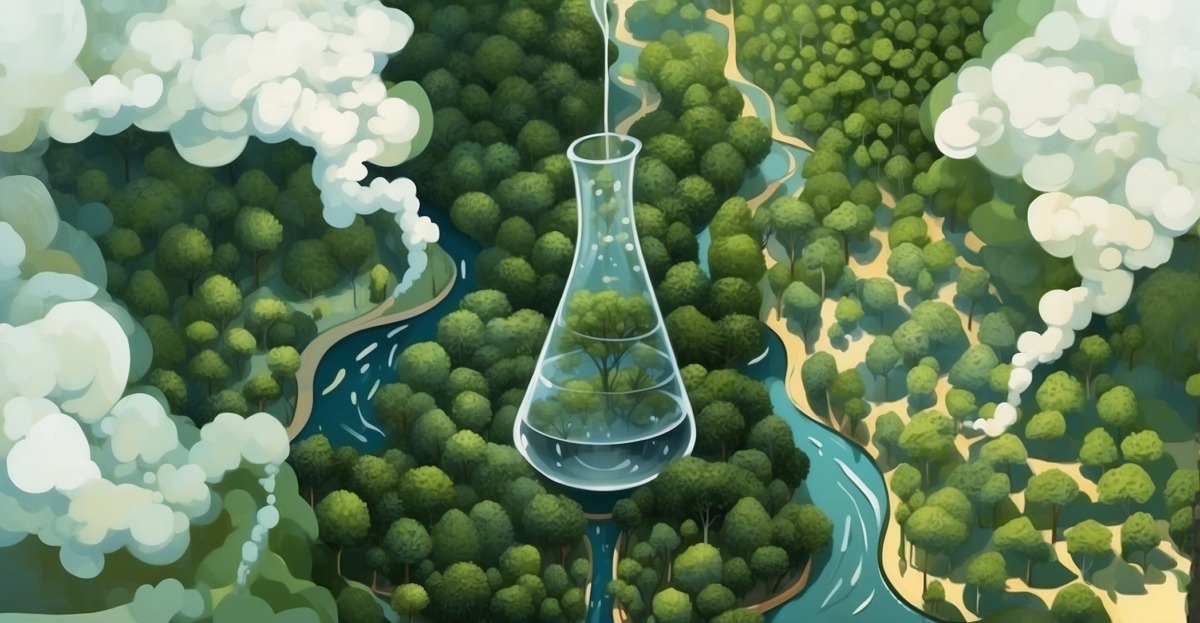Newsletter Signup - Under Article / In Page
"*" indicates required fields
Sustainability has become an essential consideration today across different industries, and life sciences are no exception. As the demand for new medications continues to grow, so does the need for more sustainable approaches to drug discovery and development. Exploring innovative and implementable ways to reduce carbon footprint and environmental impact today can help drug developers meet tomorrow’s challenges head-on.
As the world population is expected to grow and age in the coming decades, the need for new medicines to address crucial public health needs is here to stay. In parallel, increasing demands on the environment require a shift towards more sustainable drug discovery and development, as well as lab sustainability in order to develop new medicines.
Sustainability is defined by the United Nations as “meeting the needs of the present without compromising the ability of future generations to meet their own needs.” Sustainability is influenced by many factors and not always easy to achieve, as it involves and impacts stakeholders in industry, governments and individuals.
When it comes sustainable drug discovery, important considerations include understanding the ecological impact of drug development, knowing which health conditions are in need of new treatments, and knowing how to best use cost-effective approaches to develop those treatments.
Today, the need to shift to more sustainable practices in response to the climate crisis is globally recognized. While many life science companies, including biopharma, are working on reducing carbon footprints and environmental impact, the life science industry as a whole may need to step up its game in order to achieve critical environmental sustainability targets.
Table of contents
Advancing sustainability in drug development with zero waste and extended product lifecycles
The global biopharmaceutical industry is responsible for producing large amounts of waste and carbon emissions, particularly in the manufacturing stage. Waste reduction, segregation and recycling are important ways in which the environmental impact of biopharmaceutical manufacturing can be reduced.
“At Thermo Fisher Scientific, we strive to design our products – which include laboratory equipment and materials – to have a long life span, since they are meant to be used in critical laboratory applications for many years.”

“Designing our products with materials that are recyclable can extend the use of those materials and keep them in play longer. We take back, refurbish, and recycle selected products and packaging to enable extended life,” Van Loy continues. “This entails working with recyclers to provide programs that offer the best solutions for products at end of use.”
“We are also working to start ‘closing the loop’ for some products, we want to avoid sending valuable materials to the landfill. This is a challenging space, but we intend to continue helping our customers by identifying solutions best suited to their needs.”
Within its own operations, Thermo Fisher has achieved “zero waste” certification for 14 of its manufacturing, distribution and warehouse sites as of the end of 2022. In this context, zero waste means less than 10% of waste generated at these sites goes to landfill, incineration, or waste-to-energy facilities, excluding regulated waste.
These zero-waste sites are located across North America and Europe. The company has committed to certifying 30 manufacturing, distribution and warehouse sites as zero waste by 2025.
Enhancing lab sustainability
Designing with the environment in mind and investing in innovation are important parts of Thermo Fisher’s approach to environmental sustainability in drug discovery. The company’s Greener by design program aims to not only design and develop the highest performing products, but also minimize the environmental impact of its products and packaging whenever possible.
To further help customers find more sustainable products that meet their individual needs, Thermo Fisher also participates in the non-profit organization My Green Lab’s ACT label program. Similar to nutrition labels on food products, the ACT label provides information on the environmental impact of laboratory products.
“Through My Green Lab’s ACT label program, we can provide easy-to-use information about our products’ environmental impact and our customers can then compare it to similar ACT labeled products,” Van Loy explains.
Adapting to climate change
The long development timelines of biopharmaceutical products and the considerable footprint of products already on the market underscore how important sustainability is for the life science industry. To become more sustainable, companies will have to reassess their business models, drug development and manufacturing processes, and supply chains. Thermo Fisher is taking a proactive approach to achieve this for itself and its clients.
“Tackling reducing emissions within our own facilities is a top priority, but as we delve deeper into the broader scope of our emissions, it’s crucial that we also work with our partners throughout the supply chain,” Van Loy explains.
“Collaboration with our suppliers, competitors, and customers will enable us to move forward and solve the bigger challenges,” Van Loy illustrates. “This involves actively participating in tangible environmental sustainability projects, partnering with customers to better understand their needs so we may design more sustainable products, and working with suppliers to source more environmentally preferred raw materials.”

Optimising lab equipment: a cornerstone for reaching sustainability in drug development
For a life science company striving to be at the forefront of lab sustainability and more sustainable drug discovery and development, maintenance of lab equipment is of paramount importance.
“Maintaining laboratory instruments and equipment in good working condition, together with service and support to minimize downtime, can extend their longevity,” Van Loy elaborates. “These are important steps in implementing more sustainable lab practices.”
Additionally, Thermo Fisher’s Technology Refresh solution allows customers to keep their laboratory facilities up-to-date with the latest equipment and technological innovations.
“Our Technology Refresh solution allows customers to evaluate a newer version of a product upon release, to ensure the update provides the increased capacity and time savings they require,” says Phillippa Swinden, Senior Manager, Biotech Europe, the Middle East and Africa at Thermo Fisher. “The Technology Refresh solution is then tailored to the customer’s budget and funding cycles.”
“By partnering with our customers and finding affordable ways for them to own our technology, it helps ensure our customers can reach their goals and obtain results faster – without jeopardizing the quality of their data,” Swinden clarifies.
Optimising cost
Drug developers who aim to be more sustainable face other challenges as well. For example, rising operating costs require life science companies to optimise their expenses.
“Our customers tell us the main rising costs for labs are connected with rental agreements and utilities,” Swinden states. “Bringing a new drug to market, the associated clinical trials and hiring the right talent are additional factors.”
To address rising costs, Thermo Fisher offers its clients a range of flexible price and performance options tailored to a client’s needs, including significant savings offered on a range of laboratory products.
Sustainable drug discovery and development: the need of an integrated approach
With Thermo Fisher, reducing environmental impact goes hand in hand with reducing costs, mitigating risk, and maximizing productivity for a better tomorrow.
See how working with Thermo Fisher Scientific can be a catalyst on a journey to a more sustainable future for life science companies today.
For research use only. Not for use in diagnostic procedures.
Images courtesy: Thermo Fisher Scientific, Shutterstock






